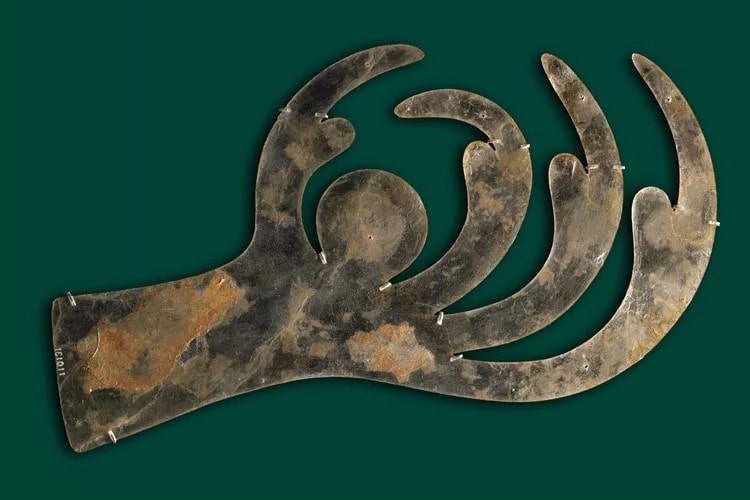Table of Contents
Mound Builders refers to various indigenous cultures in North America that constructed earthen mounds for religious, ceremonial, burial, and residential purposes.
These cultures flourished from as early as 3400 BCE to the 16th century CE, predominantly in the eastern United States.
The Mayan civilization was actually a composite of various sources, including Atlantis, Lemuria, and even the lost tribes of the Hebrew peoples.
Those in Yucatan, those in the adjoining lands as begun by Iltar, gradually lost in their activities; and came to be that people termed, in other portions of America, the Mound Builders.
Edgar Cayce – Reading 5750-1 – Iltar – Atlantis
Plato described the Atlanteans as accomplished builders, constructing walls, temples, and palaces.
This architectural prowess is evident across ancient civilizations. In both Egypt and the Americas (Peru, Mexico, Central America), architectural structures share striking similarities. Walls in both regions often receded inward, and doors were narrower at the top than at the threshold.
Obelisks covered with hieroglyphics in Egypt find their counterparts in the round columns of Central America, both possibly originating from phallic worship.
Similarities extend to burial practices, with mounds constructed in Europe and Asia for burial purposes mirroring those in America. Homer, Herodotus, and accounts of Alexander the Great describe symmetrical mounds over graves, paralleling the burial rites of the Mound Builders in America.
Adena Culture (1000 BCE – 200 CE)
- Location: Ohio Valley region, including parts of present-day Ohio, Indiana, West Virginia, Kentucky, and Pennsylvania.
- Characteristics:
- Constructed small mounds for burial purposes.
- Created elaborate grave goods, including pottery, tools, and jewelry made from copper, mica, and shells.
- Known for the “Great Serpent Mound,” a large earthen structure in Ohio shaped like a serpent.

Hopewell Culture (200 BCE – 500 CE)
- Location: Centered in the Ohio River Valley, extending to Illinois, Indiana, Missouri, and as far south as Mississippi.
- Characteristics:
- Built larger and more complex mounds than the Adena, often in geometric shapes.
- Engaged in extensive trade networks, obtaining materials like obsidian from the Rocky Mountains and shells from the Gulf of Mexico.
- Known for their intricate artworks and burial offerings.


Mississippian Culture (800 CE – 1600 CE)
- Location: Southeastern United States, including regions of the Mississippi River Valley.
- Characteristics:
- Constructed large, flat-topped pyramidal mounds used as platforms for buildings like temples and residences of leaders.
- Developed complex societies with large, centralized towns such as Cahokia, near present-day St. Louis, Missouri, which was the largest city in pre-Columbian North America.
- Practiced agriculture extensively, primarily cultivating maize, beans, and squash.

Coles Creek and Plaquemine Cultures (700 CE – 1600 CE)
- Location: Lower Mississippi Valley, including parts of present-day Louisiana and Mississippi.
- Characteristics:
- Transitioned from building burial mounds to platform mounds used for ceremonial and political purposes.
- Known for large mound complexes, such as the Emerald Mound, used as religious centers.
5. Fort Ancient Culture (1000 CE – 1750 CE)
- Location: Ohio, Kentucky, and Indiana.
- Characteristics:
- Associated with the construction of the Great Serpent Mound, although the site predates them.
- Built circular and rectangular earthworks and mounds used for habitation and ceremonial purposes.
Significance of the Mounds
The mounds served various purposes, from burial sites to platforms for religious and political activities. They reflected the social and political organization of the societies, showcasing their engineering skills and cultural practices. The mounds are vital for understanding the pre-contact history of North America and the complex societies that existed long before European contact.
Preservation and Legacy
Many of the mound sites have been preserved as national parks or historic sites, offering insights into the lives and cultures of these ancient peoples. Significant sites include Cahokia Mounds State Historic Site in Illinois and the Moundville Archaeological Park in Alabama, which provide important archaeological and educational resources.
These cultures, with their sophisticated mound constructions, remain a testament to the ingenuity and diversity of indigenous peoples in North America.
